(For the ROCAF version, please go here)
SU1946 stands for Simple Universe 1946, it is a series of late-WWII (or prototypes) planes plus some fiction. Planes in this series would have significantly better performance than their historical counterpart, and would receive a "Z" in their names to distinguish them from other, more accurate replicas.
History:

This is the Simple Universe version of the Focke-Wulf Fw 250 (otherwise known as "Focke-Wulf Twin Engine Fighter Project of November 1944").
In our Simple Universe story, this was re-developed by the post-war Luftwaffe to fit the need after East Germany received Soviet forces operating the OKB-1 EF-140 and the East Germany Air Force's own EF-128s. However, after the Me 1107 incident, they had to at least disguise this on the surface, even if the Soviets won't buy it anyway.
This particular aircraft is officially known as a "technology demonstrator" despite being put under the newly activated JG74 (74th Tactical Fighter Wing) and was actually flying combat missions from Neuburg an der Donau, Bavaria, Germany.
The aircraft is capable of carrying a Henshel Hs 293D TV guided missile for air-to-ground (or, when ambushing the EF-140, even air-to-air) missions. The missile, which is actually a gliding bomb, is advantageous for being guided and stealthy, while still packs enough firepower to level a would AA battery. For this reason, the Fw 250Zs of JG74 usually sorties at night for SEAD missions against East German AA defenses.
After successful missions and the secrecy being gradually blown, the Luftwaffe began to sell these Fw 250Zs to other users in the Far East, namely the ROCAF (Chinese Nationalists), ROKAF (South Korea), South Vietnam and the newly reborn JASDF (Japan).
Performance:
2160 km/h at sea level
8.36 sec to turn 360 deg @ 1800km/h
Armament:
4x Mauser MG-213 20mm revolver cannon (70 damage, 1200 rpm, 1050 m/s)
11 hardpoints (3 fuselage, 8 wing), one of which supports Hs 293D TV guided missile
Activation Groups:
AG1: Flaps
AG2: Release fuselage payloads & activate missile guidance+autopilot
AG3-6: Release wing pylons (3 for innermost pair, 6 for outermost, and so on)
AG7: Nav lights
AG8: disable aircraft control (for missile guidance)
VTOL Up: airbrakes
Camera 1: missile camera
^upper cockpit, the white lights on the left side of the attitude indicator are activation lights for AG2-6 (weapon release for hull, innermost wing pylon, and so on), the lights opposite to them are AG7 (navlights) and AG8 (control disable)
^The lower part of the cockpit, including joystick, pedals, throttle lever and missile guidance joystick on bottom right
How to fire the Hs 293D
- fly stable, and I suggest not too fast.
- AG8 to disable aircraft control, the red light in the cockpit (check picture above, on the right of the artificial horizon) will start to blink
- Put your joystick a bit forward (slightly "down" position)
- activate AG2, missile away and start guidance
- switch to camera 1 for missile camera and normal flight control to target.
- your plane will slightly go nose down, you can use AG1 flap to correct this. Also, if the missile is suddenly shaking, your camera may be reset back to the plane, but this does not mean the missile has been destroyed, switch to cam 1 immediately to resume control.
About how the Hs 293D works
First, why making a glide bomb?
because Ice base. Or more particularly, because that laser anti-missile system.
If you drop a bomb/missile/rocket, it becomes a legitimate target for the laser, and thus can be intercepted. However, when the ordnance is still attached to the plane, the laser will not attack it.
However, since I don't want to attach an extra engine, I had to use rockets to propel it, which again makes the Hs 293D a legitimate target for the laser. To solve this problem, I designed the rocket boosters to be ejected after the 10-second burn time (something the IRL Hs 293 doesn't do), so that the missile cannot be targeted for the whole duration from 10 seconds after launch to impact.
This makes it the ideal choice for any target guarded by the lasers.
The ROCAF livery of this aircraft will also be uploaded.
Specifications
General Characteristics
- Created On Windows
- Wingspan 40.8ft (12.4m)
- Length 45.1ft (13.7m)
- Height 13.9ft (4.2m)
- Empty Weight 12,733lbs (5,775kg)
- Loaded Weight 20,956lbs (9,505kg)
Performance
- Power/Weight Ratio 6.434
- Wing Loading 53.9lbs/ft2 (263.4kg/m2)
- Wing Area 388.5ft2 (36.1m2)
- Drag Points 3898
Parts
- Number of Parts 256
- Control Surfaces 9
- Performance Cost 1,379

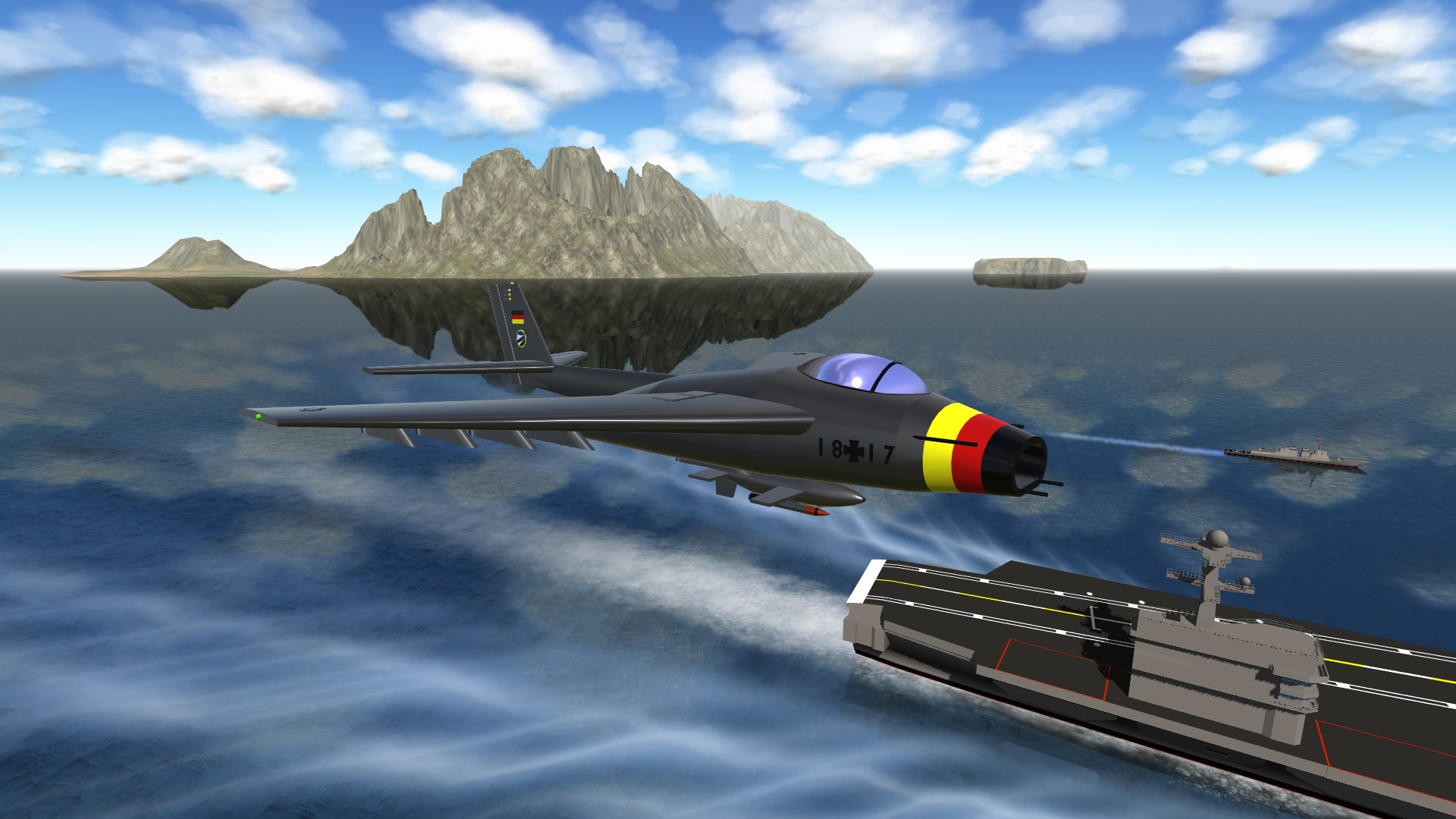
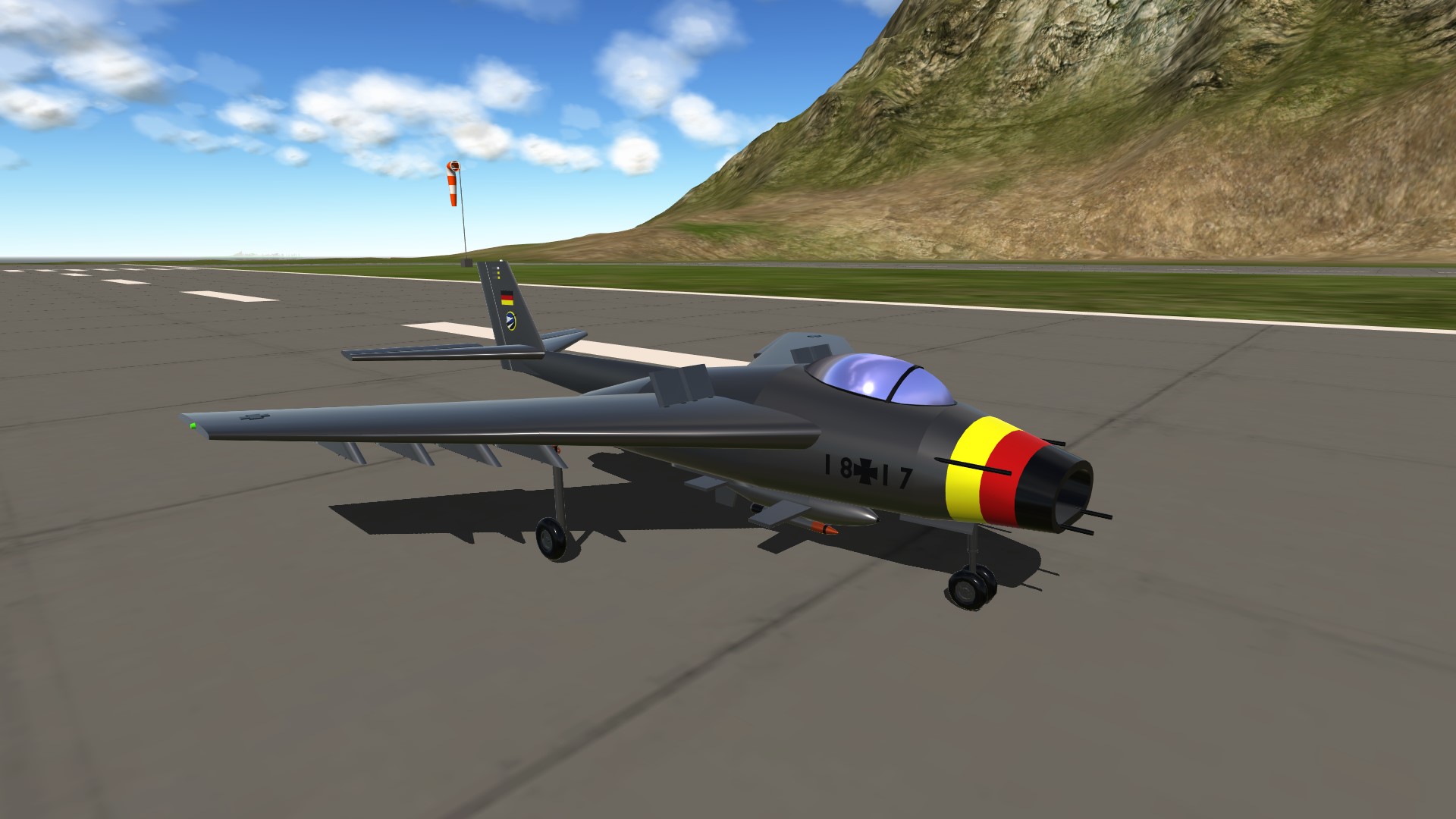
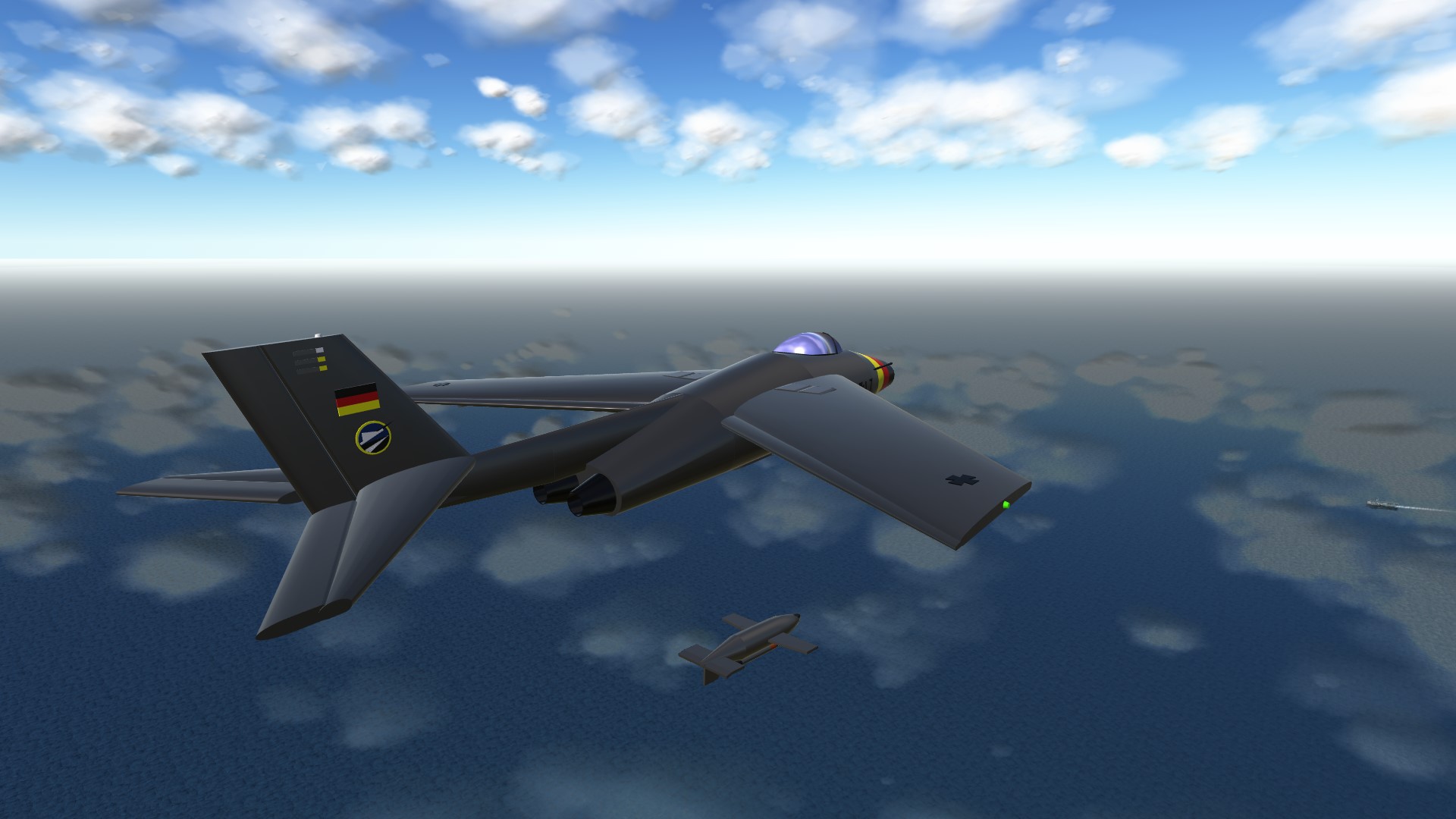


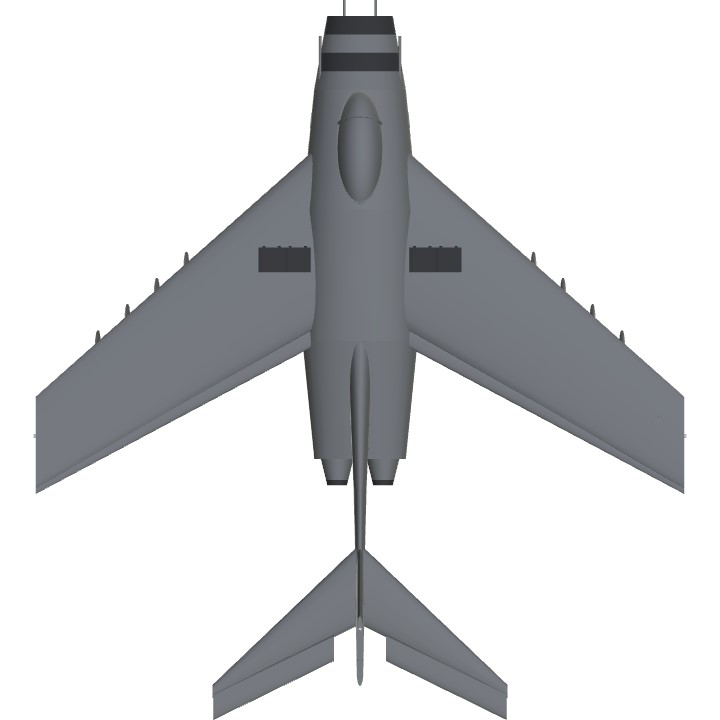

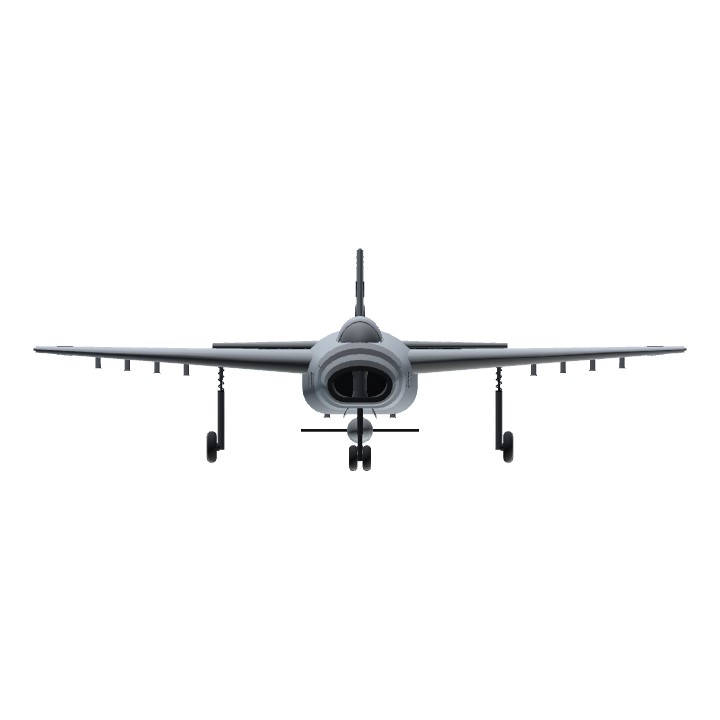
@Mtnmakoa
@MrVaultech
@FranzPeterSiegfried
@MrHoboDuck
Firth